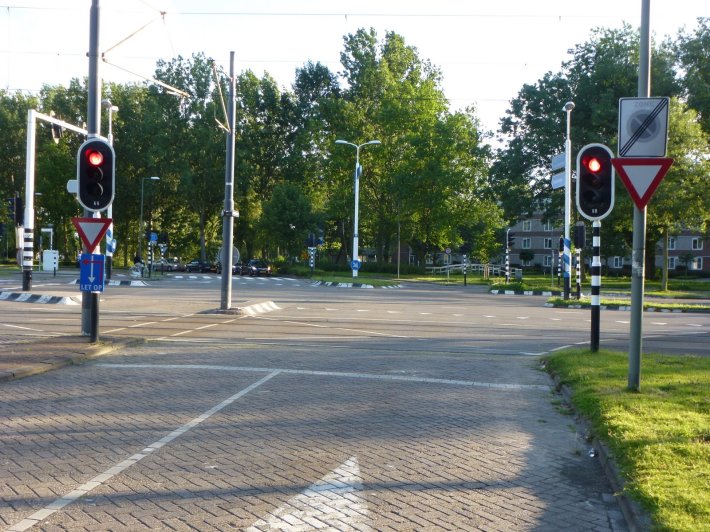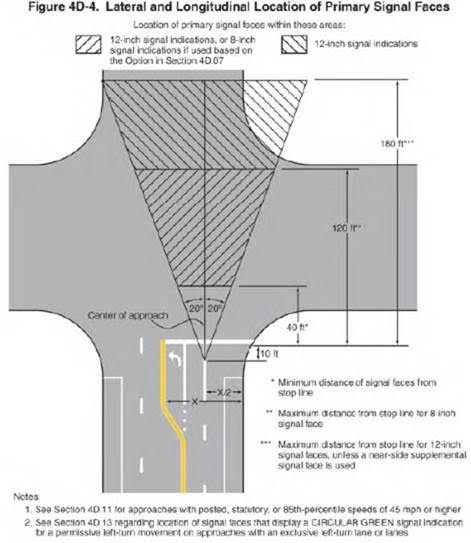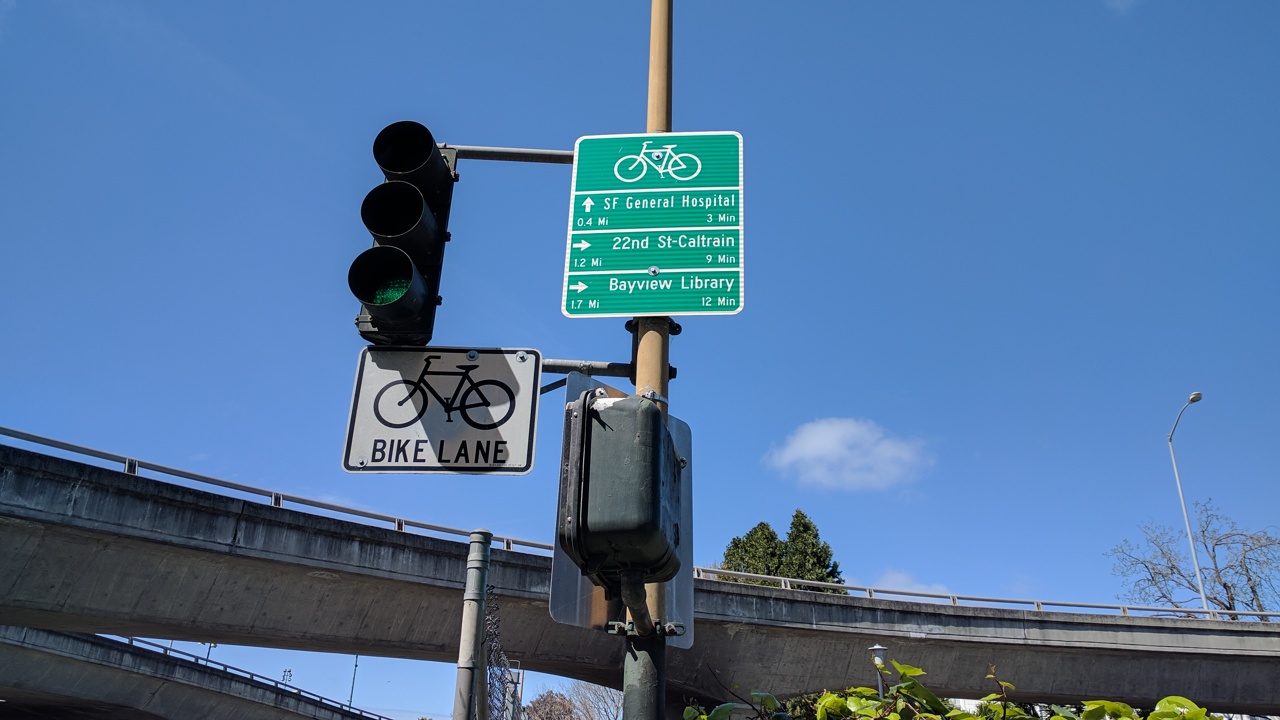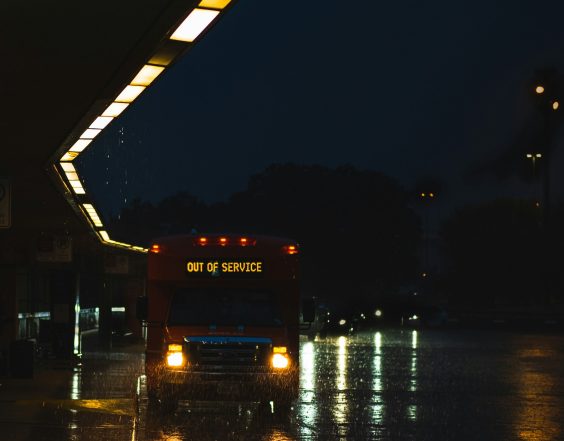A car blocked the east-bound bike path in the Hairball, where it crosses the roadway ramp to Potrero and Cesar Chavez, when Streetsblog did its tour last week.
In the news business, that's called a "dog bites man" lead, meaning it's not exactly noteworthy. Automobiles are continually blocking crosswalks throughout the Bay Area--and the rest of the country as well. But travel overseas and it's far less common.
Why is that?
From Streetsblog's perspective, it's pretty straightforward. Nobody likes waiting at a red light. So motorists have this ugly habit of inching into the crosswalk. But there's a very simple way to correct for it. And, once again, it comes from the people who have a proven safety record.
From the blog Bicycle Dutch:
Signals in the Netherlands are always on the near side, so it is true that road users can no longer see them once they are on the junction itself.

So why are traffic signals placed on the far side in the Bay Area?
"This requirement is governed by federal and state requirements for signal placement, which state that at least one, preferably two, of the signals must be located between 40 feet and 180 feet beyond the limit line (within the hatched trapezoid area in the following figure)," explained Ben Jose, a spokesman for SFMTA.

Looking at the diagram, it's clear what the engineers are doing. They want to make sure that cars can see the signal at all points through the intersection. That way, if a motorist overshoots the stop line, they still see when the signal changes. But that also tempts them ahead of where they're supposed to be.
As for pedestrians and bikes, it's clear from the diagram that they're given no consideration whatsoever.
Natalie Burdick, Outreach Director for Walk San Francisco, said it's time to look at "...both easy, proven safety treatments, such as raised crosswalks and road diets, and to pilot and evaluate more innovative approaches for their effectiveness--for instance traffic circles and near-side traffic signal placement at intersections," she said.

Which brings us back to the crossing on the Hairball. Why is this signal, in particular, on the far side of the crosswalk (as seen above), some two car lengths forward from the stop line?
As SFMTA gears up to improve the Hairball, this is an opportunity to try relocating a signal. It will be helpful for cyclists and won't create gridlock from confused motorists getting stuck, which, it might be argued, could happen on a downtown intersection. And if it works and cars stop consistently where they're supposed to for a change, perhaps signals can be moved forward at other locations in the city as well.
Let us know what you think. Do you have any experience with traffic signals overseas?
Comment below.






